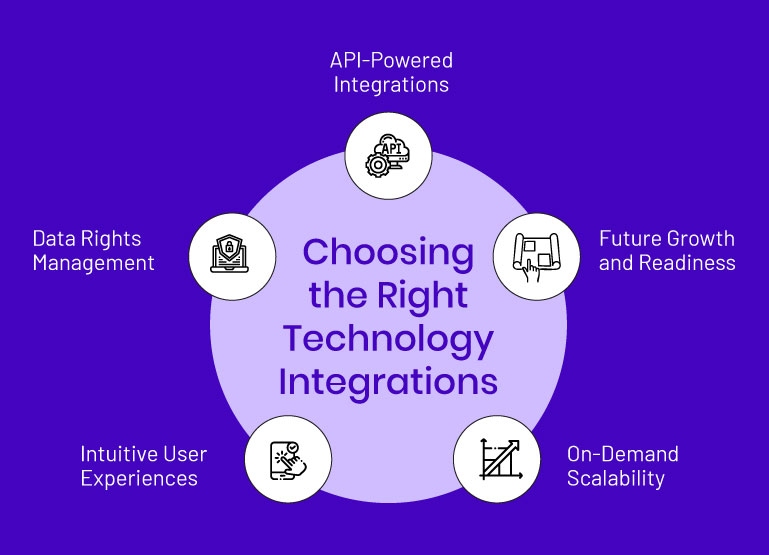A whopping 98% of parents want their children to have the flexibility to learn from home through digital modes. The emergence of hybrid and remote learning models is shaping the era of self-driven education. AI has transformed learning journeys by allowing personalization, improving accessibility and inclusivity, and maximizing engagement. This is why the demand for AI technology integrations in education is only expected to surge, creating an opportunity worth $2.25 trillion for educational publishers by 2033. To capture this opportunity, K-12 publishers must understand how tech adoption can fuel success in the digital learning arena.
How Tech Adoption Drives Growth for Educational Publishers
Digital education technologies have transformed how learning is delivered and ingested. Here are the key areas in which technology integrations impact digital learning journeys, differentiating your publishing business from the competition.
Personalized Learning Experiences
Integrating digital learning technologies has empowered educational publishers to offer flexible learning paths. AI-driven learning platforms collect student data to identify individual needs and offer personalized learning recommendations and resources. Automated assessments and grading enables immediate feedback, which provides opportunities for improvement and ensures timely intervention. Plus, AI learning assistants, such as MagicBox™’s KEA, support students by answering their queries, helping them search for required learning materials, motivating them to continue, and keeping them engaged in the absence of teachers.
Anytime/Anywhere Learning Delivery
The days of classroom-only learning have long gone. Today’s K-5 students would probably find it hard to believe that their parents only had a pencil and a notebook for class and missed school days equated to losing a lesson. Digital education technologies have enabled students to use their devices at their convenience, facilitating anytime/anywhere learning to ensure continuity. Modern learning platforms work seamlessly across devices and operating systems, allowing students to access learning in the most convenient way. Seamless experiences across devices, physical spaces, and time zones enable K-12 publishers to offer accessible learning services.
Diversified Revenue Streams
Educational publishers can leverage technology integrations to form partnerships with states, districts, and schools, creating new revenue-generation opportunities. Cloud-based models allow K-12 publishers to stay respond to market needs with agility. The ability to support subscription-based, use-based, MOOC, and other models further amplifies their revenue generation streams. AI-powered course authoring and distribution tools enable the translation of learning materials into multiple languages. This powers educational publishers to enter new markets effortlessly.
These tools also ensure compliance with edtech industry standards, interoperability standards, and privacy standards, such as LTI, WCAG, FERPA, COPPA, ePub3, and more. Streamlined workflows and course authoring automation reduce costs and time-to-market. They also free up resources for strategic initiatives.
Data-Driven Decision Making
Integration with learning analytics tools, powered with big data and machine learning, allows educational publishers to harness the power of data. They gain access to digestible reports through in-depth individual, school, and class-based learning analytics. These data insights can identify learning trends, content efficacy, and instructional adequacy, allowing K-12 publishers to refine learning materials accordingly. Data-informed product improvements and marketing strategies accelerate growth.
Digital Education Transforms Every Stage of Learning
With a 267% uptick in employee productivity, Google’s employee training program, GoogleEDU, generated an impressive ROI within the first six months of implementation. A survey by a US-based university compared the average scores of online and offline students. The survey proved that the achievement levels of online learners were higher than those of offline students. It also found that a whopping 70% of higher-ed students claim online learning experiences to be “as good as” or “better than traditional classroom settings.” With evolving job requirements, the global market for lifelong learning courses, such as MOOCs, is anticipated to reach $990 billion by 2030. These statistics highlight the crucial role of educational publishers and the growth opportunities up for grabs. Technological advances and evolving learning models are driving this growth.
Integrating Digital Technologies in Educational Publishing
While integrating the latest technologies is crucial, ensuring business continuity and preventing data loss is equally important. Plus, transforming existing learning assets to global formats and standardizing learning and assessment techniques is paramount for adoption. In the interconnected world we live in, integration with third-party digital learning tools while maintaining student privacy and data protection is non-negotiable. The single-sign facility enables seamless navigation across these tools and protects student data for continued personalization of learning experiences.
However, that is not enough. Integration of an effective digital rights management system is crucial for the online world. DRM offers time-bound and role-based course access. It offers complete protection of digital assets for K-12 educational publishers to prevent unauthorized copying, reproduction, and distribution of learning materials.
Optimal education technology integrations requires migration strategies that minimize data loss and time-to-market, which requires experience and expertise. The good news is that with MagicBox™ by your side, all education technology adoption challenges turn into opportunities. Speak to our experts to learn how they can ease technology adoption for your educational publishing.
















